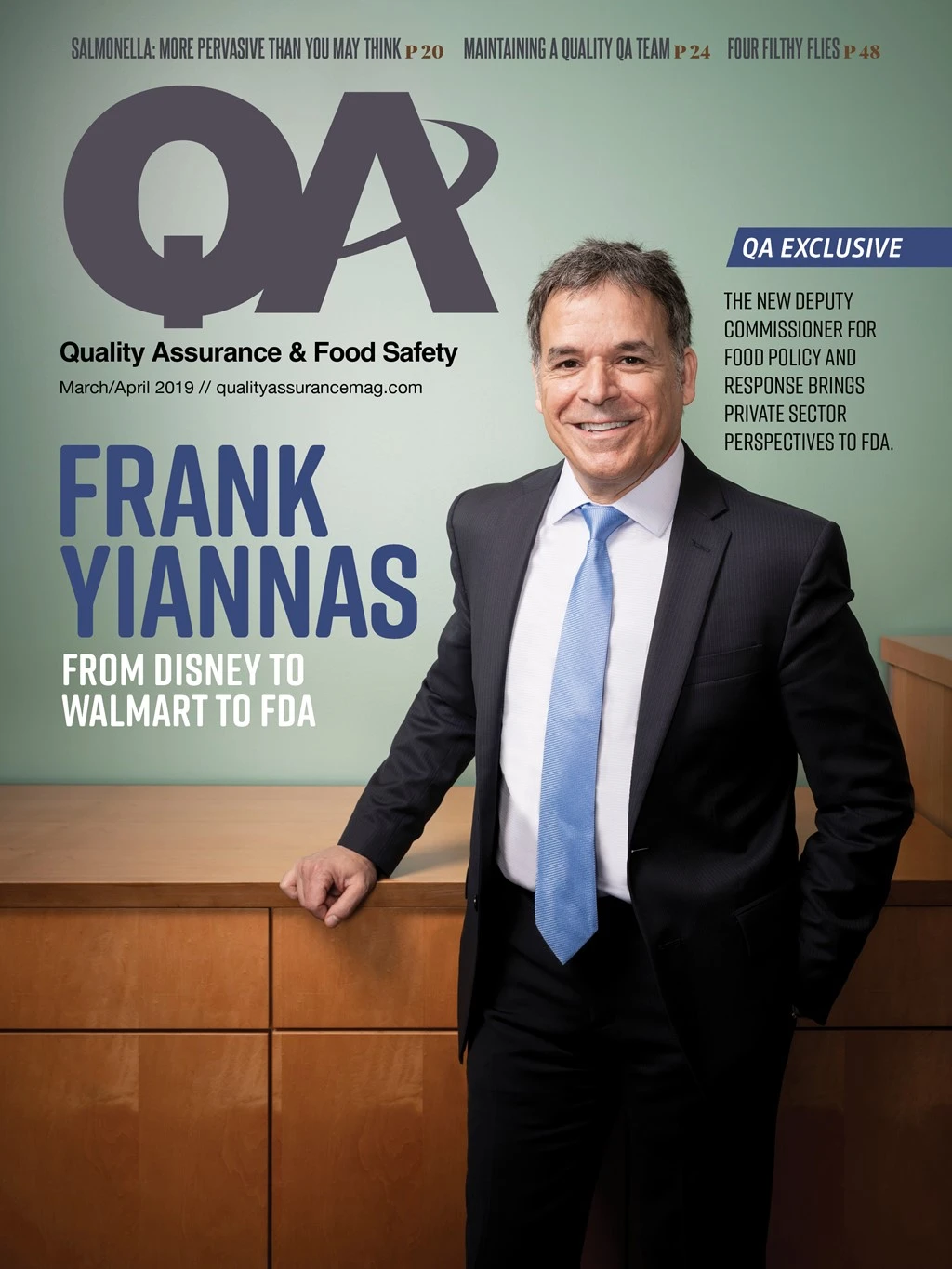
In 2018, the number of outbreaks investigated by CDC was significantly higher than in any of the last 10 years, and the last quarter of the year showed the highest number of both FDA and USDA recalls in quite some time — in more than a year for FDA; more than two years for USDA.
Such statistics led to a number of online articles decrying 2018 as the “big, bad year.” But do these numbers really indicate failures in our food safety system? Or do they, in fact, show a positive trend in our ability to more rapidly and thoroughly detect issues of contamination?
In a 2018 interview with CNN, former FDA Commissioner Scott Gottlieb said, “I think that the issue isn’t that there’s more unsafe food. I think what’s happening is that we have better technology than ever before to link outbreaks of human illness to a common pathogen.”
I tend to agree. It is no secret that the count of foodborne illnesses would be much greater if every person who was taken ill visited their doctor, was correctly diagnosed, and that diagnosis submitted to CDC.

There continues to be a lack of doctor visits and correct diagnoses, but CDC’s increased capacity to link reported illnesses through whole genome sequencing (WGS) and FDA’s use of WGS in its environmental swabbing during inspections to further link those illnesses to a food source is certain to be at least a part of the reason for increased outbreak numbers. As that shows, it is not an actual increase in outbreaks, it is an increase in the ability to link illnesses as an outbreak in ways not before possible.
The same can be said of recalls. Not only does the Food Safety Modernization Act (FSMA) require preventive practices, it requires environmental controls and monitoring for ready-to-eat foods. And with today’s dubious definition of ready-to-eat (as discussed in my column What is RTE Today?), it is likely that more manufacturers are taking FDA’s “reasonably foreseeable” statement to heart and conducting environmental testing on a regular basis — which also is likely finding more potential contaminants, and leading to more recalls, than in the past.
Thus, rather than the number of outbreaks or recalls being an indication of the system not working, they may be the exact opposite and actually indicate the system is working just as it should.
While this certainly provides a positive look at recalls and outbreaks, what I don’t see as quite so rosy is the current status of traceability across the food supply chain, or rather, the lack thereof. Recalls can help contain outbreaks, and outbreak investigations can reduce the impacts, but if we can’t trace the contamination back to its source to contain all potentially impacted foods, we are still addressing only half the issue.
Say a company recalls its chocolate hazelnut ice cream for which the chocolate is identified as the source of a pathogenic contamination. The ice cream manufacturer must, by law, provide its one-step-forward, one-step-back sourcing and distribution information, and that distributor must document the same. But that is the extent of the law, so the retailer or restaurant is not, by law, required to have that type of one up/one back information.
A further challenge is that the legal requirement is only one up and one back and yet the supply chain is much more complex than that and, unfortunately, the extent of traceability is just one up/one back by too many food facilities.
So, if any of that documentation is on paper, or if it takes the full allowable 24 hours for the facility to provide it, you can imagine how long it will take to assess the documentation all the way back to the source, out every potential spoke along the way, and forward and back from each of those.
FDA’s traceback diagram for its investigation of the multistate outbreak of E. coli O157:H7 infections linked to romaine lettuce from the Yuma growing region provides a good illustration of this — and a rationale for the time it took to conduct the traceback.
The better the industry becomes at its traceability, the better and faster FDA and CDC can do their part in investigating and containing the contamination of a recall and outbreak.
So, is the hurdle to success a lack of technology? No, it is more a failure to see an ROI in a more complex tracking system. The technology provider that can link an easy, accurate, and complete data upload with supply chain-wide compatibility — and add value in terms of maintaining cold chain, food quality/safety, or logistical delivery information — will be the winner.

Explore the March 2019 Issue
Check out more from this issue and find your next story to read.
Latest from Quality Assurance & Food Safety
- Q&A: Sandra Eskin Leads Food Safety Advocacy Organization, STOP, as CEO
- STOP CEO Eskin on Government Layoffs, Challenges in Food Safety
- Mission Barns Announces Cell-Cultivated Pork Fat Launch Following FDA Clearance
- Hearthside Food Solutions Recalls Breakfast Sandwiches Due to Undeclared Allergen
- Walker’s Wine Juice Recalls Pumpkin Juice Due to Botulism Risk
- The Cascading Food Safety Impacts of Tariffs on the Food Industry
- Tyson Ventures Calls Startups to Apply for Tyson Demo Day
- Student Finalists Selected for IFT Product Development Competitions






